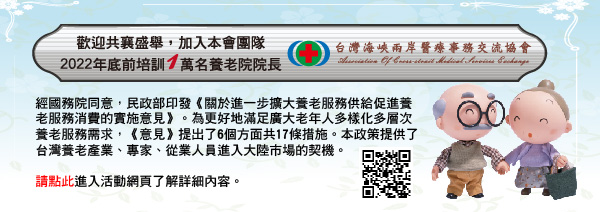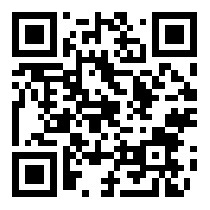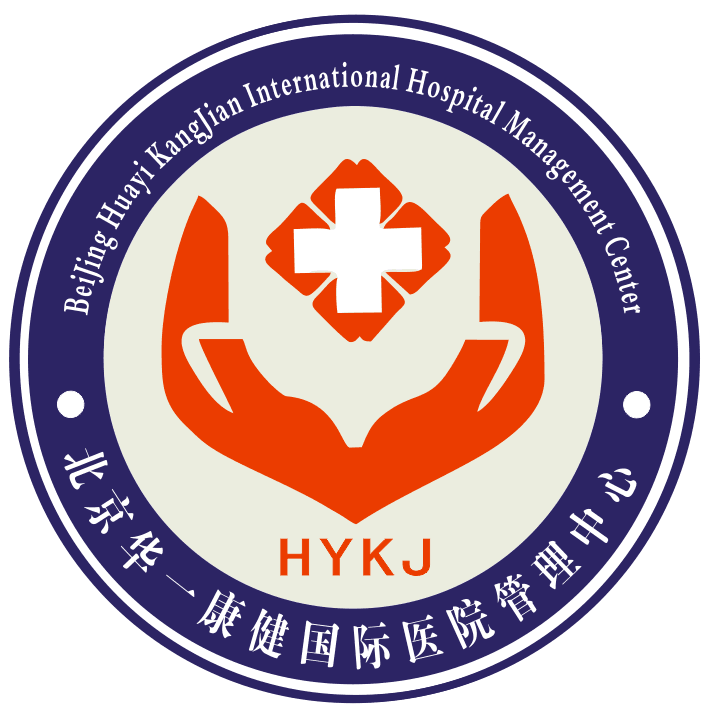首頁 ﹥ 動態消息 > 2016年媒體報導 > CRI專訪諾貝爾經濟學獎得主:中醫在國際上將有無限的可能 2016-09-01
CRI專訪諾貝爾經濟學獎得主:中醫在國際上將有無限的可能
2016-06-03 諾獎得主醫學峰會
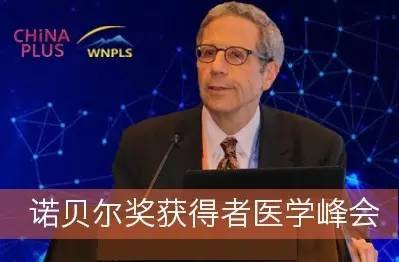
2016年5月29日,2007年諾貝爾獎經濟學獎獲得者Eric S. Maskin(埃裡克·馬斯金)受諾貝爾獎獲得者醫學峰會組委會邀請,參加京交會並在中醫藥科技創新論壇發表了演講,演講結束後接受了來自中國國際廣播電臺(CRI)的採訪。採訪圍繞經濟學與現代醫學的關聯,經濟結構如何促進醫療結構的發展進行了深入的探討,以下是來自中國國際廣播電臺(CRI)與埃裡克·馬斯金的對話。
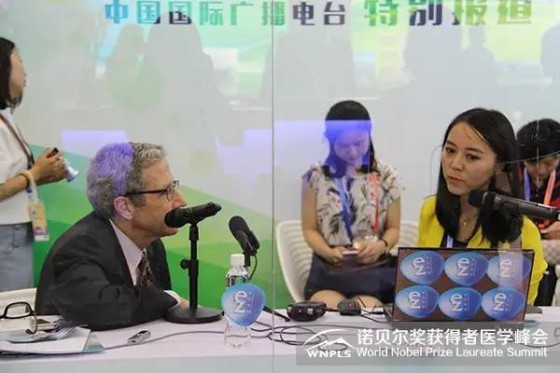
Eric S. Maskin 接受CRI專訪
CRI: I have a distinguished guest in the studio, Mr. Eric Maskin, American economist and 2007 Nobel Prize winner for Eeconomics. He won the Nobel Prize for hiswork onMechanism Design Theory, a special form of Game Theory that attempts to maximize gains for all parties within markets. I hope I have explained it correctly. Thanks for joining us, Mr. Maskin.
CRI:我們今天邀請到了美國經濟學家、2007年諾貝爾經濟學獎得主埃裡克·馬斯金先生。您因機制設計理論而獲得了2007年諾貝爾經濟學獎。這是一個很特別的博弈論形式,它試圖使市場各個參與者的利益得到最大化。我是這樣理解的。謝謝您接受我們的專訪。
CRI:Mr. Maskin, this time you are here to attend a healthcare-related conference. I think a lot of people might just wonder what does an economist do at a medical forum. So please tell us about the event and the things you are doing there.
CRI:馬斯金先生,這次您來參加醫療領域相關的大會,我想很多人可能會好奇,經濟學專家參加醫學論壇會做些什麼呢。能不能請您談談您這次參加的論壇以及您在論壇上都做了些什麼。
Eric:Well, as an economist, I am interested in economic constitutions which can help promote medical technology. One important tool in medicine is the use of drugs or medicines in various kinds. These are typically expensive to invent. And if you want to invent a new drug, you have to put in aninvestment of time, energy and money. And so economists want to study under what circumstances inventors will be willing to make such investments. And that is what I talked about in the conference.
埃裡克:作為一名經濟學家,我對經濟結構感興趣,因為它可以促進醫療技術的發展。在各種不同情況下對醫藥產品的使用,是醫學領域的一個重要工具。而發明新藥是極其昂貴的。如果你想要開發一種新藥,就必須投入時間、精力以及金錢。因此,經濟學家就要去研究在何種情況下,投資者們願意投入這些成本。我在大會的演講內容就是這個。
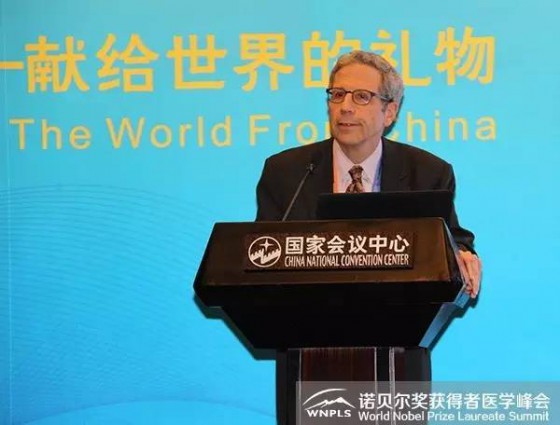
Eric S. Maskin 在會場進行發言
CRI: So what was the main idea that you gave in your presentation there?
CRI:您的主要觀點是什麼呢?
Eric:There is an old idea that in order to protect inventors from imitation, they need to be awardedsome intellectual property rights, such as patents. If I have a patent in my discovery that prevents you from imitating, and so it helps me get back the investments that I’ve made in developing that invention. But in the talk, I was suggesting that there are some circumstances where patents can actually be counterproductive. And that was the main focus of my talk to say that in some kinds of industries we do not actually benefit as a society from awarding patent protection to innovators. We are better off if imitation can occur.
埃裡克:這是老生常談的東西,為了防止新開發的產品被抄襲,開發者們就需要被賦予智慧財產權,比如專利。如果我發明的東西申請了專利,而你不能仿造,這有助於我收回我在開發這項產品時做出的投入。但我的演講中提到,某些情況下,專利保護可能會起到適得其反的效果。所以我演講的主要觀點是,在某些領域,無論是從專利保護來說,還是從創造者來說,都無法從專利保護中獲利。相反地,如果能夠適當地被模仿,我們可以變得更好。
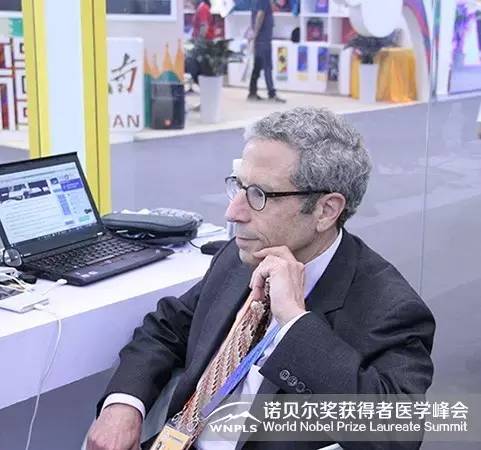
Eric S. Maskin 接受CRI專訪
CRI: I know you are very famous for your theory on patents. You suggestedthat some patents will inhibit innovation rather than stimulate progress. I actually find your own words on Wikipedia, a magic website that patent protection may reduce overall innovation and social welfare. Here in China, we areall emphasizing the importance of patent protection, IPR protection. So you’d better give us some examples.
CRI:您的專利理論非常著名。您說過:一些專利不會促進發展,反而抑制創新。我在維琪百科上找到了您說的話,您說專利保護可能會減少整體創新和社會福利。在中國,我們強調專利保護、智慧財產權的重要性。因此,您能給我們舉例說明嗎?
Eric:Well, let me say, first thatI’m not arguing against all patent protection. But in some industries, innovation tends to be sequential. That means that each discovery builds on a last one, and in order to make progress, we have to take many small steps instead of a few big steps. In industries where innovation is sequential, then patents can actually interfere with innovation. If I’ve made a discovery, and I put patents on it that makes it hard for you to build on what I’ve done and take thenext step because I can block your improvements. And that might be good for me, but it’s not going to begood for you and it may not begood for society, because society will be deprived of the improvement that you make on my discovery.
埃裡克:首先,我要說明的是,我並不反對專利保護。但在某些行業,創新是具有連貫性的,就是說每個發明都是在上一個發明的基礎上創造出來的。為了不斷進步,我們必須慢慢向前邁進,而不是一下子產生一個巨大的發明。如果在一個產業的發明是具有連貫性的,那麼專利保護其實會阻礙創新。如果我有了一項新發現,而我申請了專利,你再在我的發明的基礎上做出創造是很困難的,因為我申請的專利會阻礙你的進步。這也許對我來說是有好處的,但是對你沒好處。對於社會也沒什麼好處,因為社會被剝奪了進步的權利。
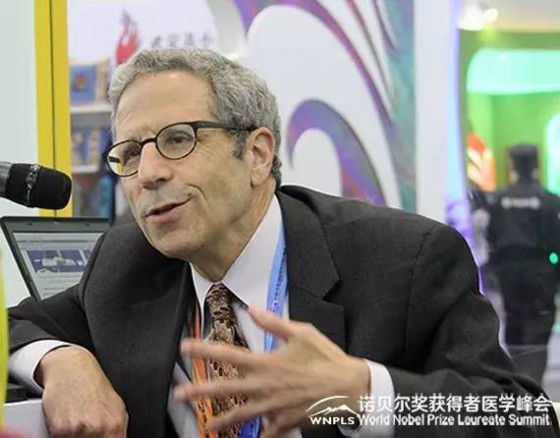
Eric S. Maskin 在專訪間回答主持人問題
CRI:Yes, if I want to stand on the shoulders of a giant, it’s impossible. Because thegiant won’t let you tostand on his shoulders. I can see that. But still for other people, it’s a reasonable demand that they get patented. How can you solve this conflict?
CRI:是的,如果我想站在巨人的肩膀上,那是不可能的,因為巨人不想讓你站在他的肩膀上。但是對於其他人來說,獲得專利是他們的合理需求。您會如何解決這個矛盾呢?
Eric:You have to decide which industries are truly sequential,and which are not. If anindustry does not involve sequential innovation, if it takes the form of unique big discoveries, then patent protection probably is important to safeguard innovation. But if an industry, andI think software is a good example of this,and maybe pharmaceutic alsalso, if innovation is highly sequential, then patents might be a bad idea. So rather than having a policy where you always give patents or you never give patents, you need a more discriminating policy which distinguishes different industries from each other.
埃裡克:你必須辨別哪些產業的發明是真正具有連貫特性的,哪些不是。如果這個行業創新並不具有連續性,如果它只是採用了一種獨特的發現形式,那麼申請專利保護對於這個行業的創新保護是很重要的。但是如果對於一個行業來說,比如軟體行業就是個很好的例子,或者醫藥行業,創新是具有高度連貫性的,專利保護對它們來說可能就是個壞主意。所以說,與其制定政策規定某個產業一定可以或者一定不能申請專利保護,不如告訴大家如何辨別這個行業是否有必要申請專利保護。
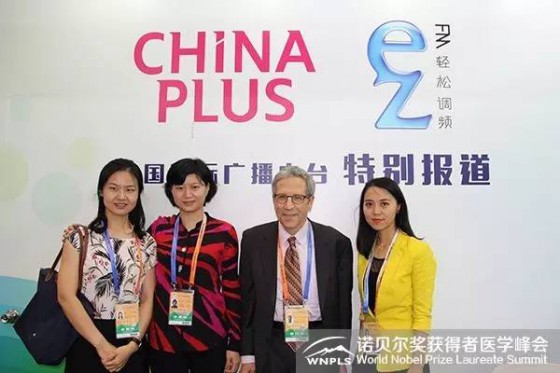
諾貝爾獎獲得者醫學峰會組委會工作人員、Eric S. Maskin 和CRI主持人 合影
CRI:You are a Nobel laureate and we really want to understand your theory. Can you please explain verybrieflyin layman'term about your Game Theory? We want to learn, we want to know about it.
CRI:作為一個諾貝爾獎獲得者,我們很想真正地瞭解您的理論。您可以給我們簡單講講您設計博弈理論的機制嗎?
Eric:I’m contributed to a field, a part of the game theoretical mechanism design. In mechanism design, we start with some particular goals that we want to achieve, the society wants to achieve, then we try to figure out what mechanism, what game or what institution will best achieve those goals. I can give a little example if you like. Suppose that you have a cake, that you want to divide between two children. And your goal is to make sure that each child is happy with the piece that he or she gets. So first child prefers his own piece to the second child’s piece and vice versa. How do you achieve that goal? (Cut it in half?) That sounds good, but theproblem is that you don’t know how the children do the cake themselves. So you might think you cut the cake exactly in half, but the children might disagree. How do you proceed if you don’t know how the children feel the cake? That’s mechanism design. So it turns out that there is a very simple but very ingenious solution to this problem. It’s called the Divide and Choose Mechanism where one child cuts the cake and the other child chooses which piece she wants for herself. And this works because the child who cuts the cake knows that the two pieces are unequal, the other child will take the big one.That’s the kind of idea that we use in Mechanism Design Theory--how do you achieve a fare outcome or a desirable outcome when we don’t know how the participants themselves view the possibilities.
埃裡克:我致力於這個博弈論的研究,它是機制設計理論的一部分。在機械設計理論中,我們首先設定我們想要達到的特定目標以及社會想要取得的目標,然後我們再試圖去弄明白是什麼機制,什麼遊戲規則或者是什麼機構能夠最好地達到那些目標。我給你舉個例子。假設你有一塊蛋糕,你想讓兩個小朋友去分它。而你要確保每個小朋友都很滿意他得到的那塊蛋糕。你怎麼才能達到這個目的呢?(主持人:將蛋糕切成兩半?)那聽起來是個好主意,但問題是你不知道小朋友們是想怎樣分這塊蛋糕的。你認為你把蛋糕切成了均等的兩塊,但是小朋友們並不這麼認為。如果在不知道小朋友們的想法的情況下,你怎麼處理這件事呢?這就是我的機制設計理論,要處理這個問題,有一個很簡單但是很巧妙的辦法,叫做分割與選擇機制,就是讓一個小朋友來切蛋糕,讓另一個小朋友來選擇他想要的那塊。這個辦法起很管用,是因為切蛋糕的小朋友知道如果他沒有把這兩塊蛋糕切得一樣大,另一個小朋友一定會選擇更大的那塊。這就是我們在機制設計理論中使用觀點,在你不清楚其他參與者的觀點的情況下,如何取得既定的理想目標。
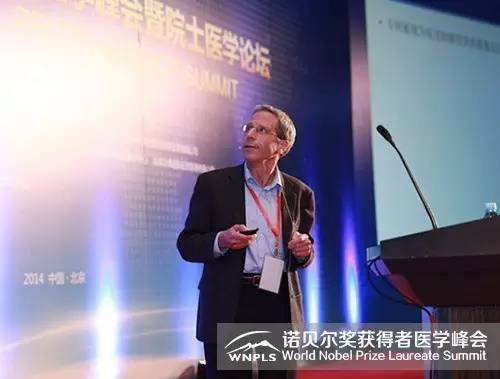
Eric S. Maskin在2014年諾貝爾獎獲得者醫學峰會上做主題發言
CRI:You participated in the 2014 World Nobel Prize Laureate Summit and gave a plenary talk at the meeting. What’s your memory about this event?
CRI:您參加了2014諾貝爾獎獲得者醫學峰會,並做了主題發言,您對這個活動有什麼印象嗎?
Eric:I was here in Beijing for the 2014 Nobel Prize Laureate Summit two years ago. And I met many Chinese traditional medicine doctors and scientists. I was impressed with the TCM theory and clinical practice. Last year Dr. Youyou Tu, a TCM scientist won China's first Nobel Prize on natural sciences. I do believe that modern TCM will join the main stream of world biomedical sciences and have a great future.
埃裡克:2年前我到北京來參加了諾貝爾獎獲得者醫學峰會,見到了很多中國傳統醫學的醫生和科學家,我對他們的理論和臨床研究印象深刻。去年,一位中醫科學家屠呦呦獲得了中國第一個自然科學類的諾貝爾獎,我相信,未來中醫在國際上將有無限的可能。
CRI:You’ve explained your theory in a very simple way, easy to understand, but sadly we don’t have enough time to go deeply into that. Thank you very much for your time here and for your views.
CRI:您用一個簡單的方法解釋了您的理論,淺顯易懂。遺憾的是我們沒有足夠的時間進行深入討論。謝謝您今天給我們講述您的觀點。
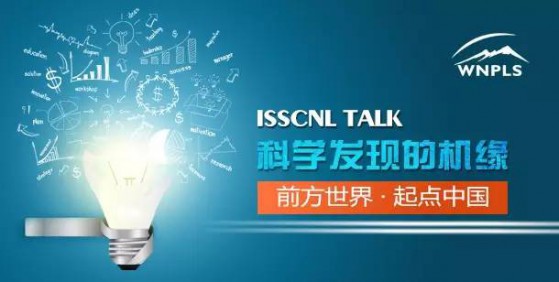
延伸阅读
9月1日至3日,2016·諾貝爾獎獲得者醫學峰會暨中美院士論壇將在成都盛大舉行。本屆大會由中國科學技術協會指導,中華中醫藥學會、中國醫師協會、諾貝爾獎得主國際科學交流協會(ISSCNL)、世諾醫學交流中心(籌)共同主辦。屆時有6位諾獎獲得者,10余位中美院士,國家級領導人和各級政府相關部門領導,3位世界頂尖技術研發及轉移中心負責人,多家重量級金融投資機構,全國各級醫療機構院長、主任、臨床醫生,國內外生物醫藥、醫療器械企業高管、科研人員,國內外醫學研究科研人員、院校師生等,近千人將到場出席峰會。
